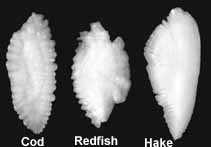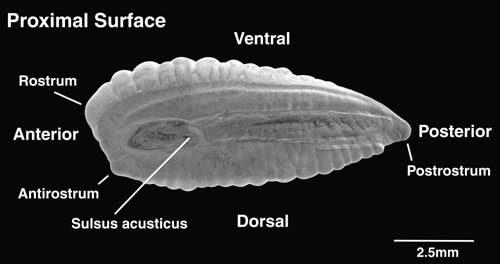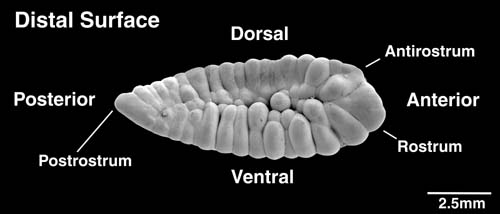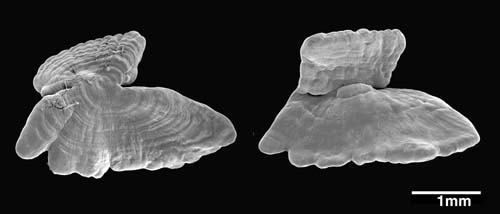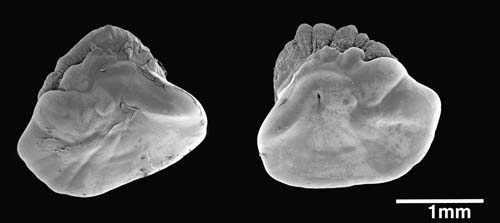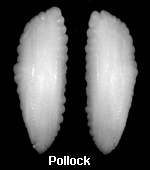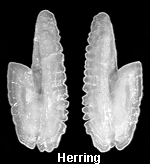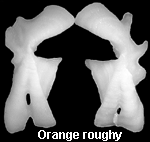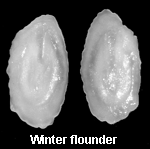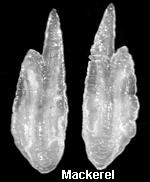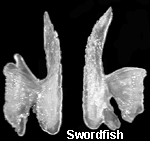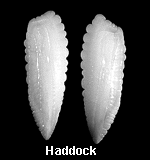Otolith Shape
Otoliths have a distinct shape which is often characteristic of the species of fish. Thus fish, seal and seabird biologists, as well as taxonomists and archaeologists, often rely on the shape and size of preserved or undigested otoliths to reconstruct the species and size composition of the diet of fish predators.
Identification is aided by the fact that otoliths resist degradation better than most other tissues, and are often the only identifiable animal remains recovered from stomachs and droppings, as well as Indian middens. Reference collections of otoliths now exist in several locations around the world, although none claim to be comprehensive. The best published descriptions are those of Smale et al. (1995) for South African fishes, Harkonen (1986) for Northeast Atlantic fishes, and Nolf (1985) for fossil fishes. None contain photographs of the non-sagittal otoliths (the lapilli and asteriscii). Nor are larval fish otoliths presented, due to their relatively uniform globular shape.
We have completed the preparation of a reference otolith collection for fishes of the northwest Atlantic. This collection includes images of 580 sagittal otolith pairs representing 288 species, as well as samples of lapilli and asteriscii from most families, all of which have been digitally photographed using image analysis procedures. This book was published in 2004.
Some sample images of common species are reproduced below.
Otolith appearance and shape often vary geographically within a species, although there are mixed reports concerning the potential for stock discrimination.
In a comprehensive examination of the shape of all 3 otolith pairs, Campana and Casselman (1993) concluded that otolith shape did indeed vary among some stocks, although the stock variation appeared to be environmentally induced rather than genetically induced.
Variations in shape were highly correlated with variations in growth rate, whether among sexes, ages or year-classes. Therefore, otolith shape may prove to have some potential for stock discrimination when large differences in growth rate exist among the stocks. This was demonstrated to be the case in Icelandic cod, where otolith shape proved to be a relatively stable characteristic of spawning aggregations where growth rate also differed (Jonsdottir et al. 2006). However, in instances where growth rates are similar among groups of fish, even if the groups are widely separated geographically, the prospect for using otolith shape as a stock discriminator is not promising.
